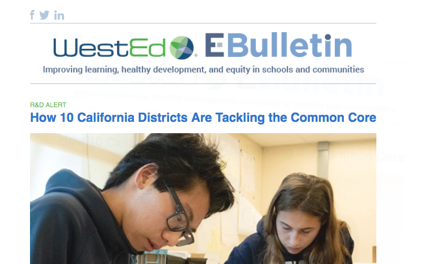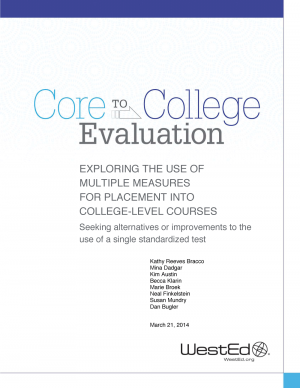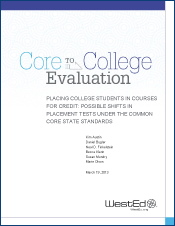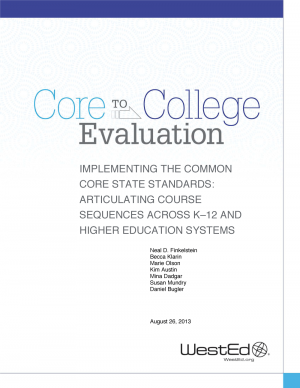Core to College Evaluation: Exploring the Use of Multiple Measures for Placement into College-Level Courses
Description
Standardized tests alone may not be the most accurate measure for placing students into college-level courses. WestEd researchers have identified the use of multiple measures as a way to increase placement accuracy.
Researchers have also suggested that multiple measures may more comprehensively support the transition from high school to entry-level, credit-bearing college coursework, as well as the incorporation of alternate assessments in the college placement process.
This report features a literature review that defines multiple measures and summarizes recent research on the logistics, benefits, and challenges of using multiple measures for student placement.
The literature review also categorizes the primary ways in which multiple measures are currently in use, and highlights examples of how states and institutions are using these different approaches.
The report also profiles seven states that are implementing, or planning to implement, multiple measures and/or other alternative placement measures at the local and/or state level.
The report concludes with key observations and takeaways for states as they consider using multiple measures for placing students in college-level courses.
Other reports in the Core to College series:
- Placing College Students in Courses for Credit
- Building Bridges through Stakeholder Outreach and Engagement
- Implementing the Common Core State Standards: Articulating Course Sequences Across K–12 and Higher Education Systems
- Statewide Networks: Connecting Education Systems and Stakeholders to Support College Readiness
Resource Details
Product Information
Copyright: 2014Format: PDF
Pages: 47
Publisher: WestEd
Stay Connected
Subscribe to the E-Bulletin and receive regular updates on research, free resources, solutions, and job postings from WestEd.
Your download will be available after you subscribe, or choose no thanks.







